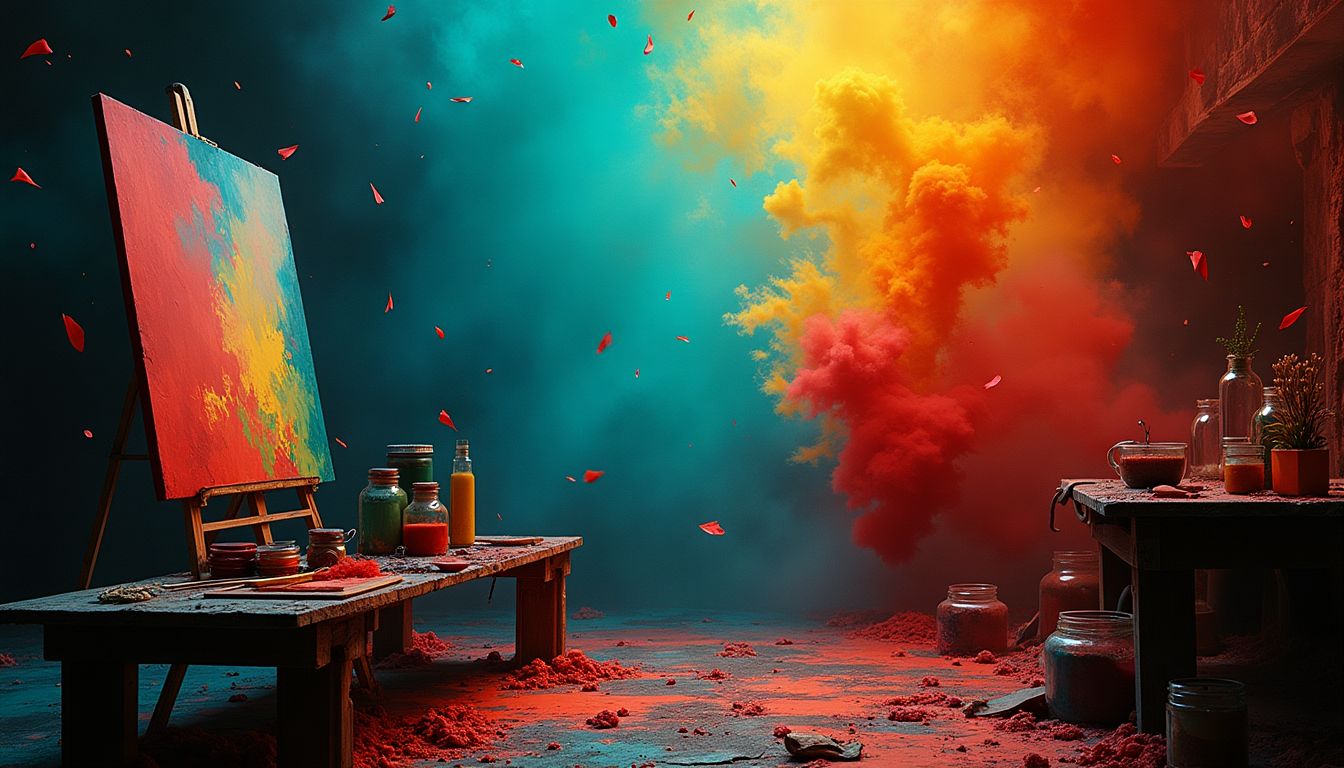When we think of paintings, images of serene landscapes or enchanting portraits often come to mind. Yet, hidden beneath the sublime beauty of these artworks lies a sinister story of danger that artists and paint producers of the past knew all too well. For centuries, the pigments that brought vibrancy to these masterpieces were concoctions of dangerous substances that could rival a witch’s brew. In this article, inspired by a captivating SciShow video, we'll dive into the world of art's most toxic pigments, where beauty wasn't the only thing that took your breath away. Literally.
If you're familiar with historic paint, you'll know that danger often masqueraded as beauty. It's precisely the peril that made the colors pop. So, strap in, as we dabble through the storied history of a painter's most hazardous companions. Let's begin with a pigment most known for its deceptive innocence—white.
The Fateful Allure of Lead White
One could argue that lead white was the superstar of ancient pigments. It was a staple for centuries, thanks to its vibrant hue and robust longevity. Roman architects couldn’t get enough of it, splashing it onto everything from frescoes to facades. Yet, this seemingly benign pigment was a secret assassin. Now, if it’s news to you that lead is toxic, you’re welcome. If not, it’s worth revisiting what makes this metal so menacing.
Lead’s nefariousness lies in its ability to disrupt essential biological processes. When it invades your body, it mimics calcium’s behavior, infiltrating bones and hijacking the calcium ion channels. Imagine these channels as gatekeepers for nutrients entering our cells. But with lead, it's like handing the key to a burglar, leading to health calamities, from kidney issues and hypertension to neurological nightmares. Even today, we’re alerting folks to “No lead, no problem”—lest we forget its severe impact on cognitive development.
Thankfully, today’s painters have traded the perilous lead white for safer alternatives like zinc oxide and titanium dioxide, both offering bright whites without serving a side of doom.
Vermilion's Sinister Secret: The Toxic Tale of Cinnabar
Next in our kaleidoscope of killers is cinnabar, the OG quintessential red that brightened countless historic canvases. Widely favored in ancient Greece and Rome, this pigment was as luscious as it was lethal. A blend of mercury and sulfur creates this brilliant hue—yet who would suspect this fiery red could mean game over for anyone mining or making it?
Mercury, the star player in cinnabar, was no stranger to Roman prudence; they knew it was poison. The gruesome labor of mining it was left to enslaved individuals, essentially handing them a life sentence. For anyone contemplating using cinnabar, note that ingesting or even skin contact with it could lead to mercury poisoning, eliciting symptoms from tremors and hallucinations to full-blown insanity. Yes, seeking the perfect crimson for your art should no longer lead you down such a path of peril.
Orange You Glad for Safer Shades? The Lethal Charm of Minium Orange
If your muse demands the vibrancy of orange, steer clear of minium orange, historically crafted from lead tetroxide. Popular during the Medieval period for illuminating manuscripts, this radiant pigment was essentially lead white gone rogue. Subjecting the lead to intense heat morphed it into an eye-catching orange with the same treacherous touch.
Given its lethal properties share a common ancestry with its white cousin—lead—you can likely guess that the fruity hue wasn’t worth the risk. Today’s oranges have smarter and safer upbringings, sparing artists the lead-laden legacy of days gone by.
When Yellow Spells Trouble: The Hazardous Hue of School Bus Yellow
What about a cheery yellow? Oddly enough, even school buses got tangled up with toxic tints. Meet the pigment known as National School Bus Glossy Yellow, chosen in the 1930s to elevate bus visibility to a color of caution. But unbeknownst to many, it coated buses in a double-dose of doom—lead chromate.
While lead's dastardly attributes have already had their moment, let's spotlight chromium, particularly the hexavalent chromium in lead chromate. Think of it as a relentless electron thief, marauding through molecular structures and leaving havoc in its wake. Chromium’s volatility was such that even inhaling it could doom your nose with ulcers. So, maintaining vigilance was vital—just the wrong kind when the yellow buses rolled into town.
A Double Dose of Green: The Arsenic Affair in Victorian Wallpapers
Scheele’s Green, a Victorian darling, had its beauty backed by arsenic—a danger known yet deftly ignored. Carl Wilhelm Scheele, a chemist, stumbled upon this stunning shade in the 18th century, gifting parlors across Britain’s opulent homes with an ethereal glow accompanied by arsenic's dark undertones.
Occupants inhaled the poison through the air, and factory workers faced even worse fates. While this decade-spanning pigment eventually fell from favor, it's a stark reminder of when aesthetic allure unjustly trumped human health. For Scheele’s Green and others like Paris, lasting impacts echo beyond their colorful facades.
The Blue Abyss: Manganese Blue’s Eminent Warning
Skipping ahead in time to more recent discoveries, manganese blue took its turn as a star pigment across pool sides and panoramas from the 1930s to 1990s. Despite its eye-catching brilliance, this synthetic hue didn’t stay in vogue solely for its vibrant pop. Hidden within were ingredients such as barium manganate, waiting to bring an unwelcome introduction to barium's deadly nature if given the chance.
Similar to manganese, even a slight misbalance between beneficial and bane could flip one's world disastrously. Though only crafted through industrial processes today, remember that your favorite summer escape might once have meant more than fresh air and a tan—something a bit more insidious.
Passing the Violet Baton: The Harrowing Journey of Cobalt
Ending this vibrant yet venomous palette journey is cobalt violet, introduced in 1859, initially featuring arsenic. As cobalt violet cemented its position in the artist's arsenal, its partner in crime, arsenic, posed risks exacerbated by cobalt’s lingering threat when meddled with long-term.
Today’s artists opting for cobalt violet can breathe easier, as modern concoctions steer clear of arsenic. Yet, this storybook hue implores us to pause and remember—the beauty that captivates our gaze may harbor unimaginable depths of history wrapped in ribbons of danger.
As we look back through time at these pigments, consider their secret tales: entrancing beauty shadowed by literal life and death stakes. Next time you're awestruck by museum marvels, think twice—beyond symbolism and craft, the palette itself tells a tale oft neglected in favor of a focus on strokes and storytelling.
What art materials sit on your palette today, and where do they find their lineage among these tales? Join the discussion below and take a deeper dive into history, artistry, and adventure. Let's further this colorful conversation and become a part of the iNthacity community, one swatch of color at a time. Drop a comment, hit the like, share your thoughts, and let's unravel more truths in the web’s shining city.
Wait! There's more...check out our gripping short story that continues the journey: The Alchemist's Last Portrait
Disclaimer: This article may contain affiliate links. If you click on these links and make a purchase, we may receive a commission at no additional cost to you. Our recommendations and reviews are always independent and objective, aiming to provide you with the best information and resources.
Get Exclusive Stories, Photos, Art & Offers - Subscribe Today!

























Post Comment
You must be logged in to post a comment.